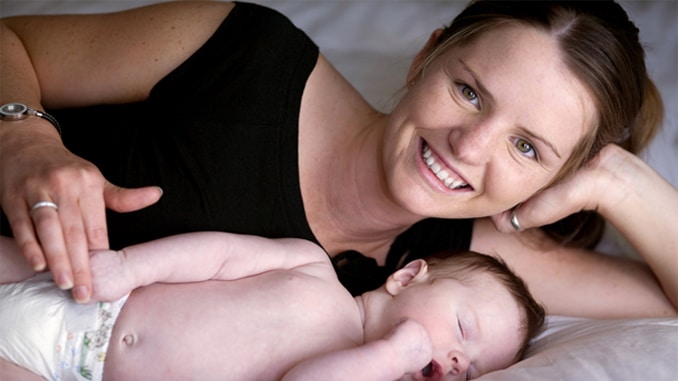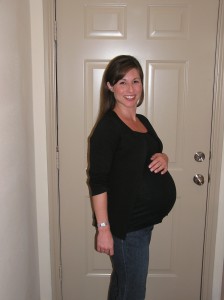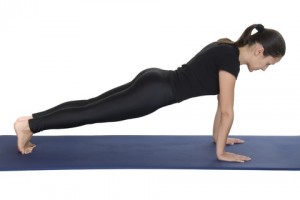
Postpartum depression (PPD) is a normal response to an abnormal situation: the sudden and often stressful transition from being a pregnant person to being a parent. It’s also one of the most common postpartum complications, affecting about 10% of new mothers. Unfortunately, PPD is often misunderstood or stigmatized, making it harder for women to get help when they need it. Luckily, there are plenty of ways you can make sure you don’t get PPD — and if you do get it, there are ways to ease its effects and speed up recovery as quickly as possible.
After giving birth, you’re probably feeling pretty exhausted. Add to that the stress of caring for a newborn and getting back to a normal routine, and it’s no wonder new moms sometimes feel like they don’t have time for exercise. That doesn’t mean you can’t get back in shape after your baby is born, however. In fact, getting into an exercise routine can help you recover from childbirth faster, reduce stress levels, and improve your overall health. The best part is that you don’t need a gym membership or fancy equipment to get started. You just need some motivation and these postpartum exercises ideas.
Sara Dean
More great information for you, this time on postpartum weight loss.
It is from my friend, Sara Dean, who is a personal trainer in Seattle, and focuses on postpartum weight loss.
Take it away, Sara…

But, there are a few challenges in working with new moms. I know it can be incredibly daunting for male trainers to deal with this population, as they aren’t sure how to relate to some of the unique postpartum lady issues.
The main thing to remember is postpartum moms feel out of control of their bodies, and they are DESPERATE to recognize themselves in the mirror again. They wanted results YESTERDAY, and they have only moments a day to focus on themselves. On top of all that, they have some special needs that must be addressed when it comes to workouts – like how NOT to pee their pants while doing jumping jacks.
Postpartum Programs
It’s our duty as fitness professionals to inspire new mothers to dream big. We must not allow them to settle for a mediocre physique; rather, we must offer them hope that they can achieve their ideal physique. We can help them do so in a short time period.
Training programs for new moms must be quick, efficient, and specific to postpartum needs. Moms who train smart can get away with as little as 2 hours a week of exercise (provided they are keeping their nutrition dialed in, of course.) You have a unique opportunity to give moms their bodies back if you are smart with their training programs.
When designing programs for new moms, there is a hierarchy of needs. You must have them start at the very bottom and work their way up, or they will almost certainly run into an injury at some point and have to regress their program, which is no fun for anyone….
Here is what you need to address, in the order in which you should address it:
1. Pelvic Floor Exercise
It is no secret that everything down south is entirely out of whack after giving birth. The pelvic floor has been stretched to the max, and everything above it is not appropriately supported. Reconditioning the pelvic floor is the first step to getting back into shape for moms. Without this step, the core is compromised, which means not all movement/exercise is completely safe or effective, as the client is at significant risk for injury.
Moms can start pelvic floor reconditioning right after birth. They do not need to wait for your six-week postpartum check-up to do Kegels and Elevators. They can do these right away, every day, without any equipment or planning. Moms who do this before getting back to their regular exercise routine are leaps ahead in postpartum training.
2. Extremely weakened core/Low back risks
Any mom’s core has been stretched beyond belief before childbirth. Along with reconditioning the pelvic floor, it is essential to renovate the body as soon as possible postpartum. Similarly, moms can do a few things immediately to get on top of this conditioning. They can start with isometric holds of the TVA and Zippers right away. I recommend moms practice these and Kegels/Elevators while nursing/feeding. That gives them an assigned time to do this every day. Every time they nurse, they can do a few sets.
These simple core exercises give moms some “homework” when they can’t do full workouts, which is empowering. It also gets them to focus on themselves a bit here and there (even if it is amidst feedings…)
Workouts
A highly weakened state of the core creates a significant risk for moms’ low backs. Moms are constantly bending over – diapering, putting baby down, picking baby up, nursing….. It’s ALL about turning over ALL day. Add to this excess belly weight and a severely de-conditioned core, and you have the perfect recipe for a significant back injury. This is all too common for moms. So, the quicker you can get them reconditioning their cores, the better. I’ve known new moms who have been bedridden with back trouble and unable to care for their brand new babies. It is heartbreaking. It’s our responsibility to educate new moms to recondition asap!
Note: Once moms can come back to complete workouts and training, be sure to have them check for diastasis recti before giving them any ab exercises. Many, if not most, moms have this and need to modify core exercises accordingly. Moms with Diastasis Recti should stick to core exercises like pelvic tilts and planks, so they are never pushing their belly out. This means crunches and sit-ups are a huge no-no!
Once mom’s diastasis is 2 cm or less, they may resume regular ab work. Here is a sample workout.
3. Scapular protraction/exceedingly tight chest
In addition to the low back being at high risk for injury, many moms are almost stuck in scapular protraction. Given their posture in nursing/feeding and cuddling, it’s easy to see how this can happen. So exercises that open the chest and retract the scapula are essential. I have moms do very little chest work. We do mostly back work or two back exercises for every chest exercise.
4. Jumping Exercise

These days, I warn new moms that they might want to take some of the suggested modifications as we move through higher impact exercises when they come to class. I also occasionally cue people to engage their pelvic floor, which elicits some laughter, but ultimately reminds everyone, especially moms, to tighten up the entire core.
5. Body Image/impatience
This may be the biggest challenge for you as a trainer. Like I said above, postpartum moms wanted their bodies back yesterday. So they are very hard on themselves at every turn. They will point out all the negative changes in their body, and they will constantly ask you how long it will take them to lose all their baby weight.
It is your job as a trainer to listen to them, as we must provide a safe place for women to vent about body image. From there, educate and empower them. Be honest. Tell them they MUST clean up their diet (get rid of all that crap people keep dropping off at their front door!), and they MUST move. And, they MUST be very consistent about both of these things. One without the other will likely not give them the results they are looking for. However, diligence and discipline will do not need to take nine months to lose the baby weight (I detest the saying, “It took nine months to put it on, so it’ll take none months to take it off.”) However, it can take years without the proper focus and training.
Training Program

As you work with moms, always remember to work in the hierarchy. Please don’t give them something their core can’t handle and don’t embarrass them by making long jumps across the room!
Fit Healthy Moms is owned by Sara Dean, a Seattle-based personal trainer. Sara holds and operates a local personal training and Boot Camp Business, Sync Fitness.
Fitness and exercise can completely change your pregnancy and postpartum experience. Sara started Fit Healthy Moms in 2010 after years of working with prenatal and postnatal women. Sara’s passion is helping moms lose baby weight and burn baby belly fat.
At the urging of her clients, Sara launched Fit Healthy Moms to provide moms with the necessary information about postpartum weight loss. Moms all over the country are using her online downloadable postpartum weight loss program, 6 Week Pregnancy Weight Loss.
Thank you so much, Sara.
I hope this gives you some tips on what to do with your client focusing on postpartum weight loss.
That is it for today.
Rick Kaselj, MS



